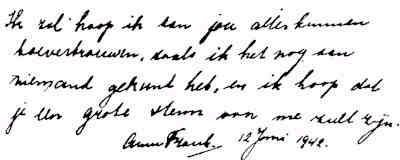
Anne Frank Center Buenos Aires: Visiting Hours, Tickets, and Visitor Guide
Date: 14/06/2025
Introduction
The Anne Frank Center Buenos Aires (Centro Ana Frank Argentina para América Latina) is a landmark institution in Argentina, dedicated to preserving Anne Frank’s legacy and promoting education on human rights, tolerance, and democracy. Since its opening in 2009, it has provided a powerful space for reflection on the Holocaust, Argentina’s own troubled history, and the ongoing fight against discrimination. This guide offers detailed visitor information, including opening hours, ticketing, accessibility, guided tours, exhibits, and nearby attractions, while exploring the Center’s cultural significance and community impact.

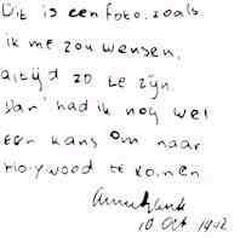
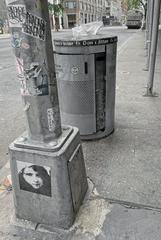

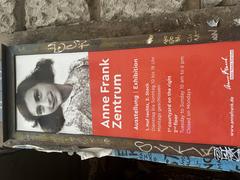
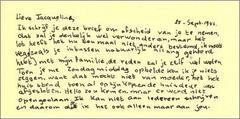
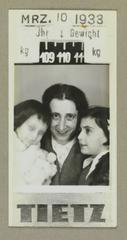
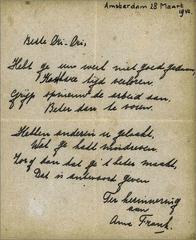
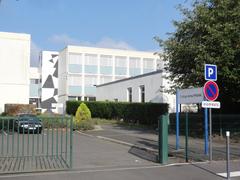
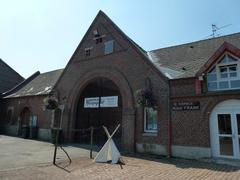
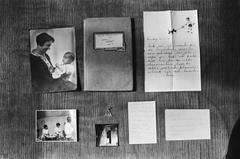 Dutch Nazi camp Westerbork. Anne Frank stayed in this barrack from August till early September 1944, before she was taken to Auschwitz and then Bergen-Belsen.">
Dutch Nazi camp Westerbork. Anne Frank stayed in this barrack from August till early September 1944, before she was taken to Auschwitz and then Bergen-Belsen.">
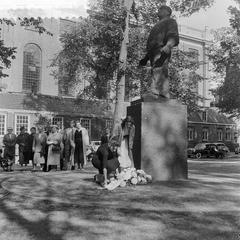

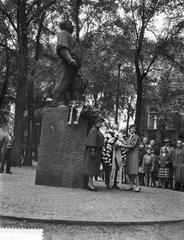
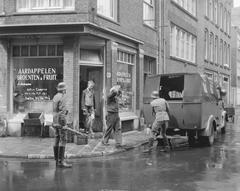
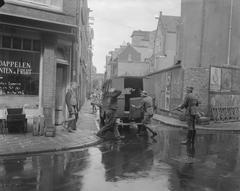
Historical Context: Anne Frank’s Legacy and Global Resonance
Anne Frank, born in 1929 in Frankfurt, Germany, is one of the most recognized victims of the Holocaust, immortalized through her diary. After fleeing Nazi persecution, the Frank family lived in hiding in Amsterdam from 1942 to 1944. Anne’s diary, preserved by Miep Gies and published by her father Otto Frank, has become a universal symbol of hope and resilience in the face of oppression (History Hit). The diary has been translated into more than 70 languages and has inspired generations, including figures like Malala Yousafzai and Nelson Mandela (Anne Frank House).
Anne Frank Center Buenos Aires: Origins and Mission
Inaugurated on June 12, 2009, to mark Anne Frank’s 80th birthday, the Center is the first Anne Frank House affiliate in Latin America (whichmuseum.com). Located at Superí 2647, in the residential Coghlan neighborhood, the Center’s mission is rooted in using Anne Frank’s testimony to educate about the consequences of antisemitism, discrimination, and state violence—both historical and contemporary (turismo.buenosaires.gob.ar). The Center contextualizes Anne’s story within Argentina’s own history, notably the military dictatorship of 1976–1983, and is recognized for its commitment to inclusivity, democratic values, and non-violence.
Visitor Information
Location and Directions
- Address: Superí 2647, Coghlan, Buenos Aires.
- Access: Easily reachable via public transport (bus lines, train, and nearby Subte D—Congreso de Tucumán). Taxis and rideshares are also convenient.
- Nearby Avenues: Monroe, Cabildo, Congreso, Olazábal, Crámer, Balbín, and de los Incas.
Visiting Hours (2025)
- Thursday–Sunday: 14:00–19:00
- Special Evening Hours: Wednesdays and Thursdays until 21:00 for groups (advance booking required)
- Closed: Mondays, Tuesdays, and national holidays
- Tip: Check the official website for seasonal updates.
Ticket Prices
- General Admission: ARS $6,000
- Discounted Admission: ARS $5,000 (teachers, students, retirees)
- Children under 12: Free
- Special Offers: 2-for-1 with cash payment on Thursdays and Fridays
- Purchase: Online via the official website or on-site (advance booking recommended for groups and English tours)
Museum Exhibits and Facilities
Permanent Exhibits
- Replica of the Secret Annex: The only Latin American recreation of the Amsterdam annex, including the famous movable bookcase, bedrooms, kitchen, and bathroom (welcomeargentina.com).
- Original Artifacts: Objects from the Frank family, a branch of Anne’s chestnut tree, and a Yad Vashem medal honoring the “Righteous Among the Nations” (centroanafrank.com.ar).
- Multimedia Displays: Infographics, timelines, photographs, and video testimonies connecting Anne’s story with the Holocaust and Argentina’s dictatorship (turismo.buenosaires.gob.ar).
- Thematic Exhibitions: Rotating displays on discrimination, state violence, and resilience.
Anne Frank Theater
Since 2019, the Center’s on-site theater hosts performances, workshops, and book presentations, furthering Anne Frank’s legacy through the arts.
Facilities
- Restrooms: Accessible restroom on the ground floor.
- Gift Shop: Books and souvenirs focused on Anne Frank, memory, and human rights.
- Photography: Allowed in most areas; flash may be restricted.
Educational Programs and Outreach
Guided Tours
- Languages: Spanish by default; English tours available with advance booking.
- Guides: Led by over 80 trained youth volunteers (aged 15–25), fostering intergenerational dialogue (Buenos Aires Herald).
- Duration: Approx. 60 minutes.
- Themes: Anne Frank’s life, Holocaust history, Argentina’s dictatorship, and contemporary discrimination.
Workshops and Seminars
- Topics: Holocaust education, hate speech, democracy, and inclusion.
- Teacher Training: Accredited courses for integrating human rights into school curricula.
- Theater Workshops: Programs like “La ventana del árbol y Ana Frank” use storytelling to inspire empathy.
Traveling Exhibitions and Community Engagement
- Itinerant Exhibitions: Programs like “Ana Frank, Una historia Vigente” reach communities throughout Latin America.
- Literary and Artistic Contests: Annual competitions encourage youth reflection on memory and identity.
- Public Forums and Youth Conferences: Fostering regional dialogue on tolerance, justice, and human rights (mercopress.com).
Accessibility
- Building: The museum is in a historic two-story building. The ground floor is wheelchair accessible (including restrooms); the second floor, housing the Secret Annex replica, is only accessible by stairs.
- Contact: Visitors with mobility challenges should notify the Center in advance for assistance.
Visitor Experience and Practical Tips
- Best Times: Weekday afternoons are less crowded; weekends and school holidays are busier.
- Booking: Strongly recommended for groups and English-language tours.
- Arrival: Arrive 10–15 minutes before your tour.
- Tour Duration: Allocate at least 1.5 hours for the full experience.
- Children: Content is suitable for ages 10 and up due to sensitive themes.
- Conduct: Maintain respectful behavior; the site is a place of remembrance.
Nearby Attractions
Combine your visit with other significant Buenos Aires historical sites:
- Parque Saavedra: A spacious urban park.
- Museo de la Memoria (ex ESMA): Focused on Argentina’s human rights history.
- Museo Histórico Sarmiento, Palacio Hirsch, Museo Larreta: Offer further insight into the city’s cultural legacy.
- Jewish Buenos Aires: Explore Jewish heritage sites (Jewish Buenos Aires Tourism).
Frequently Asked Questions (FAQs)
Q: What are the Anne Frank Center Buenos Aires visiting hours?
A: Thursday–Sunday, 2:00 PM to 7:00 PM. Check the official website for seasonal changes.
Q: How do I buy tickets?
A: Purchase online or at the entrance (advance booking recommended, especially for English tours and groups).
Q: Is the Center accessible for people with disabilities?
A: The ground floor is accessible; the second floor is only reachable by stairs.
Q: Are tours available in English?
A: Yes, but must be requested in advance.
Q: What is the best time to visit?
A: Weekdays and outside school holidays are least crowded.
Q: Can I take photographs?
A: Yes, except where indicated by signage.
The Center’s Role in Argentine Society and Beyond
The Anne Frank Center Buenos Aires plays a vital role in fostering remembrance and critical thinking about intolerance and state violence. With over 1.8 million participants in its programs and 1.45 million museum visitors (Centro Ana Frank), it stands as one of the most visited memory and human rights institutions in the country. Partnerships with international organizations like the Anne Frank House and Yad Vashem underscore its global reach (annefrank.org).
The Center’s youth-driven, peer-education model is recognized for empowering young people to lead dialogue on memory and democracy. Its initiatives have been declared of educational interest by the Argentine Ministry of Education, and June 12 has been established as a day for adolescents and youth to promote inclusion and coexistence (UTEDYC Newsletter).
Visuals, Media, and Virtual Resources
- Photos: Exterior of the Center, Secret Annex replica, and the chestnut tree sapling.
- Virtual Tour: Available on the official website.
- Map: Embedded on the website for directions and nearby attractions.
Conclusion
The Anne Frank Center Buenos Aires is more than a museum—it is a beacon of memory, education, and social responsibility. Whether you are a resident or a traveler, a visit to the Center offers an opportunity to reflect on the lessons of history and engage in the ongoing fight against intolerance and injustice. For up-to-date information on schedules, tickets, and special events, visit the official website, and consider downloading the Audiala app for guided tours and curated content on Buenos Aires’ cultural heritage.
Embrace the chance to connect with Anne Frank’s enduring message of hope and resilience in the heart of Argentina.
Sources and Further Reading
- History Hit
- Anne Frank House
- Centro Ana Frank Argentina para América Latina
- WhichMuseum: Centro Ana Frank Buenos Aires
- Buenos Aires Tourism: Centro Ana Frank
- Mercopress: Anne Frank Awards Event
- Buenos Aires Herald
- UTEDYC Newsletter
- Jewish Buenos Aires Tourism
- Welcomeargentina: Ana Frank Argentina House




























































































































































